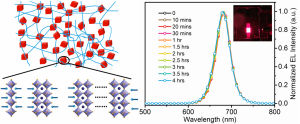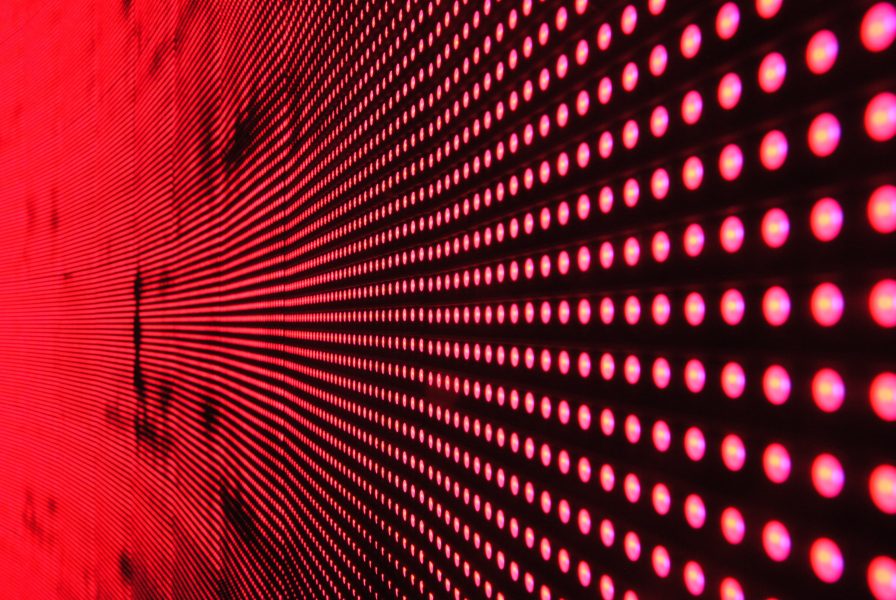Light emitting diodes (LEDs) incorporating inorganic, organic, or nanoscale materials are highly promising for solid-state lighting and displays. Metal halide perovskites, an emerging class of solution processable semiconductors with exceptional optical and electronic properties, have shown a great potential for electrically driven LEDs.
Despite the significant progress achieved in green emitting perovskite LEDs in recent years, blue or red emitting LEDs still remain a challenge with regards to their performance and spectral stability during operation.
 In their paper published in Advanced Materials, a team of researchers led by Professor Biwu Ma from the Florida State University, demonstrate a new approach to build efficient and spectrally stable red perovskite LEDs.
In their paper published in Advanced Materials, a team of researchers led by Professor Biwu Ma from the Florida State University, demonstrate a new approach to build efficient and spectrally stable red perovskite LEDs.
The group developed a simple solution processing method followed by thermal annealing to prepare highly luminescent ultra-smooth polyme–perovskite composite thin films with tunable emissions from red to deep-red.
The color tuning was achieved by taking advantage of the quantum size effect in quasi-2D cesium lead iodide perovskites with different thicknesses of layered quantum well structures. The new approach overcomes an issue related to the change of emission color due to ion migration and phase separation during the device operation, a common problem present in other red emitting perovskites containing mixed halides.
Optimizing the device architecture, the researchers achieved the most efficient and spectrally stable red perovskite LEDs reported to date, with brightness and EQEs of up to 1392 cd/m2 and 6.23 %, respectively.
According to the authors, “This work demonstrates a new pathway toward high performance perovskite LEDs with desired emission colors, and further establishes metal halide perovskites as new generation solution processable semiconductors for optoelectronic devices”.

















